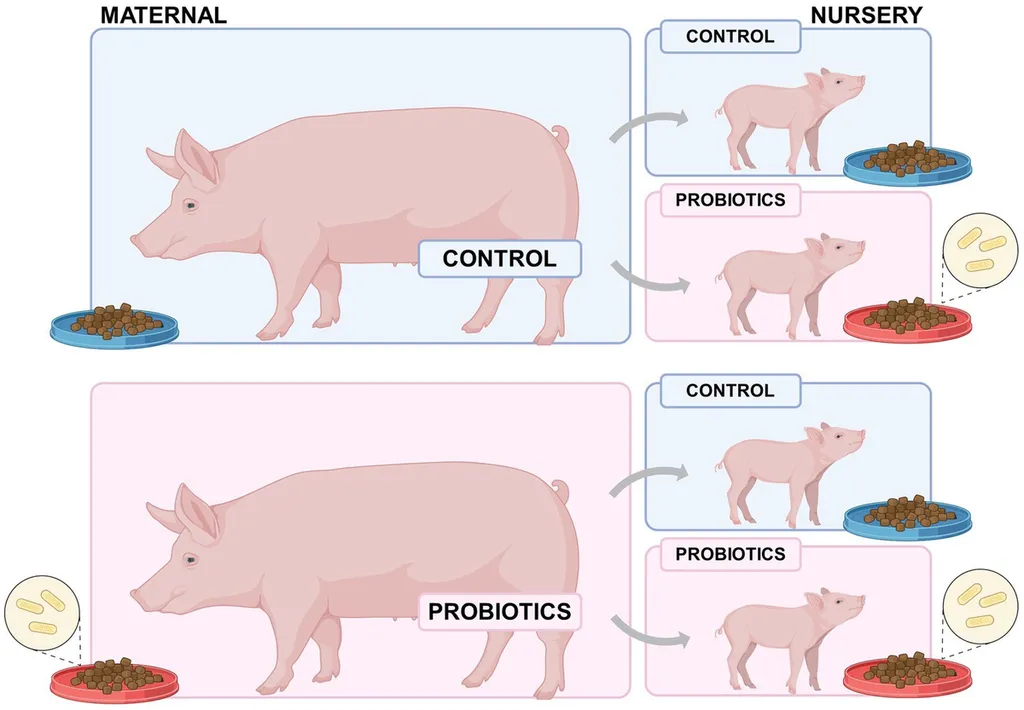In the ever-evolving world of animal nutrition, a recent study published in *Frontiers in Veterinary Science* has shed new light on the intricate balance of fatty acids in the diets of nursery pigs. Led by Junjie Guo from the College of Animal Science and Technology at Gansu Agricultural University in Lanzhou, China, the research delves into the effects of varying the ratio of omega-6 (n-6) to omega-3 (n-3) polyunsaturated fatty acids (PUFAs) on growth performance and lipid metabolism in young pigs.
The study is a significant step forward in understanding how dietary fatty acids influence the health and productivity of nursery pigs, a critical phase in their development. The findings could have substantial commercial implications for the agriculture sector, particularly for pig farmers and feed manufacturers seeking to optimize growth rates and overall health outcomes.
“Our research indicates that the ratio of n-6 to n-3 PUFAs in the diet can significantly impact the growth performance and lipid metabolism in nursery pigs,” Guo explained. “This balance is crucial for ensuring optimal health and productivity in these animals.”
The study explored different dietary ratios of n-6 to n-3 PUFAs and their effects on various parameters, including average daily gain, feed efficiency, and lipid metabolism. The results revealed that specific ratios could enhance growth performance and improve lipid profiles, which are essential for the overall health and marketability of the pigs.
One of the key findings was the identification of an optimal n-6 to n-3 PUFA ratio that promoted better growth rates and more efficient feed conversion. This ratio could potentially be incorporated into commercial feed formulations to improve the economic viability of pig farming operations.
“By fine-tuning the dietary fatty acid composition, we can potentially reduce feed costs and improve the overall profitability of pig production,” Guo added. “This is particularly important in an industry where margins can be tight, and efficiency is paramount.”
The research also highlighted the role of lipid metabolism in the overall health of nursery pigs. Understanding how different fatty acid ratios influence lipid metabolism can help in developing diets that support better immune function, reduce inflammation, and enhance overall well-being.
The implications of this study extend beyond the immediate findings. As the agriculture sector continues to seek sustainable and efficient practices, the insights gained from this research could pave the way for more targeted and effective nutritional strategies. Future developments in this field may include the formulation of specialized feed additives or the development of genetically modified crops that naturally produce the optimal n-6 to n-3 PUFA ratios.
In conclusion, the study led by Junjie Guo and published in *Frontiers in Veterinary Science* offers valuable insights into the complex world of animal nutrition. By understanding the delicate balance of fatty acids in the diet of nursery pigs, the agriculture sector can make significant strides in improving the health, productivity, and economic viability of pig farming operations. As the industry continues to evolve, these findings will undoubtedly play a crucial role in shaping future developments and best practices.

